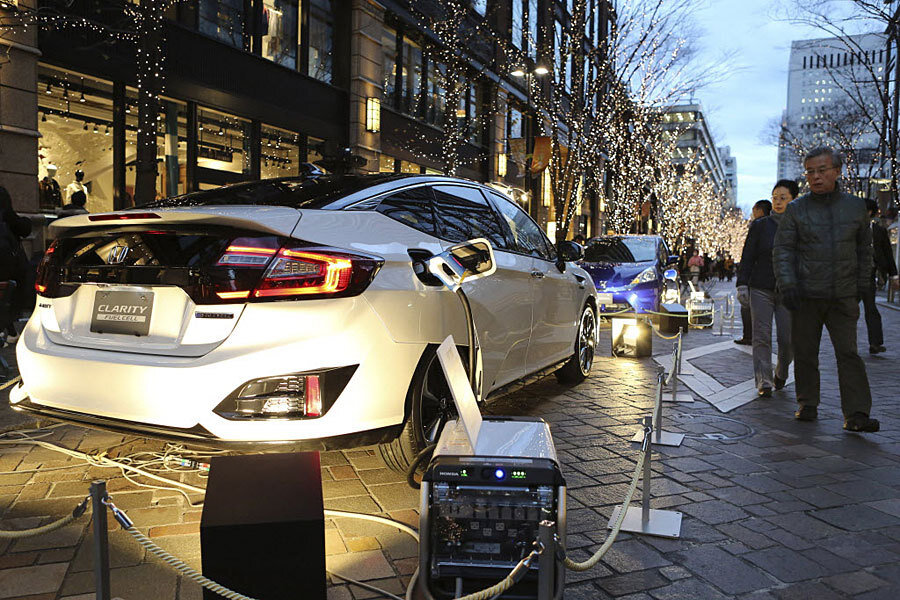Honda, Toyota, and Hyundai fuel cell cars are coming, but they won't be cheap
Loading...
While cars powered by hydrogen fuel cells have been around since 2002, the technology has improved to the point that they’re starting to catch on more widely with customers. And while fuel cell cars won’t be cheap, they promise to be a pretty green way to travel.
Honda announced this week that its hydrogen-powered Clarity Fuel Cell sedan will be available before the end of 2016, at a price of around $60,000. That’s roughly the same price as the Toyota Mirai sedan and Hyundai Tucson Fuel Cell SUV, although none of the three cars are currently available in the United States outside southern California. (The Tuscon Fuel Cell is available in Korea and Europe, although only a handful have sold.)
The main reason there aren’t more hydrogen-powered cars on the road in the US, Europe, and eastern Asia is the lack of hydrogen fueling stations. There are only 14 public hydrogen stations in the US, and only three outside southern California. South Korea has only 11 stations, according to Green Car Reports. Electric vehicle charging stations such as Tesla’s SuperCharger depots have been popping up across the globe, but hydrogen stations haven’t multiplied as rapidly.
For automakers and would-be owners of hydrogen fuel cell cars, it’s a self-reinforcing problem: Why build hydrogen fuel stations when so few cars will use them? Why buy a hydrogen fuel cell car when there are so few places to fill up?
That tension may be resolved soon, however. Last year Toyota began working with several energy companies to create a string of hydrogen stations along the East Coast of the US, and the Japanese government plans to support the installation of a network of hydrogen stations in the country by 2020.
Unlike electric vehicle charging stations, which take at least 20 to 30 minutes to partially charge a car, hydrogen fuel stations can top a car off in just five minutes. Toyota and Honda say their hydrogen fuel cell cars can travel about 300 miles on a tank.
Hydrogen-powered cars may also get a boost from a new, more economical method of pulling pure hydrogen from water. The technique, announced earlier this month in the scientific journal Nature Chemistry, uses a biomaterial to split water into hydrogen and oxygen. A hydrogen-powered car essentially works in reverse, producing water vapor rather than greenhouse gases as it runs. That means hydrogen fuel cell cars have the potential to run even more cleanly than electric vehicles, which don’t produce any greenhouse gases themselves but may, depending on where they’re plugged in, get their energy from a coal-fired power plant.








